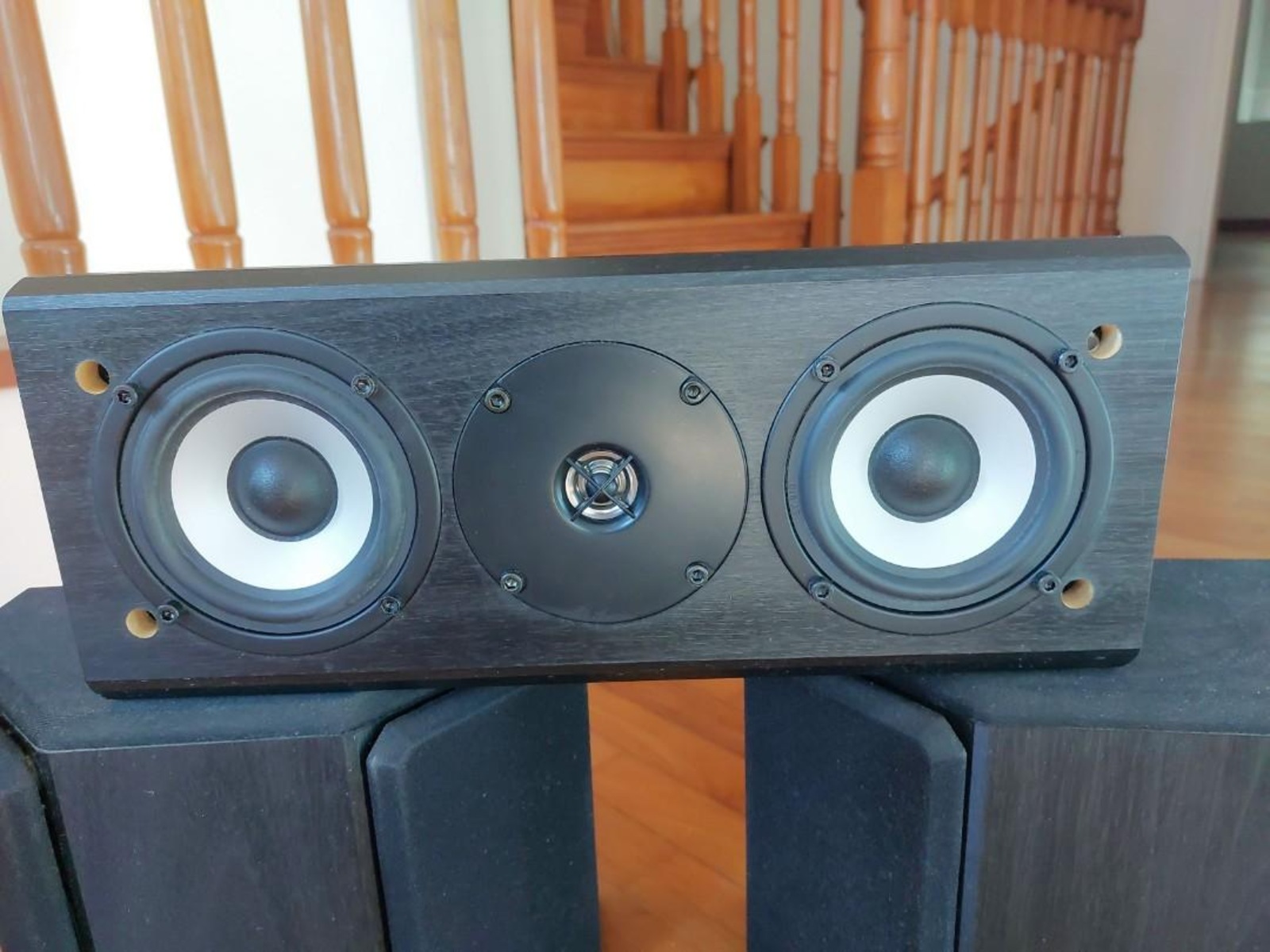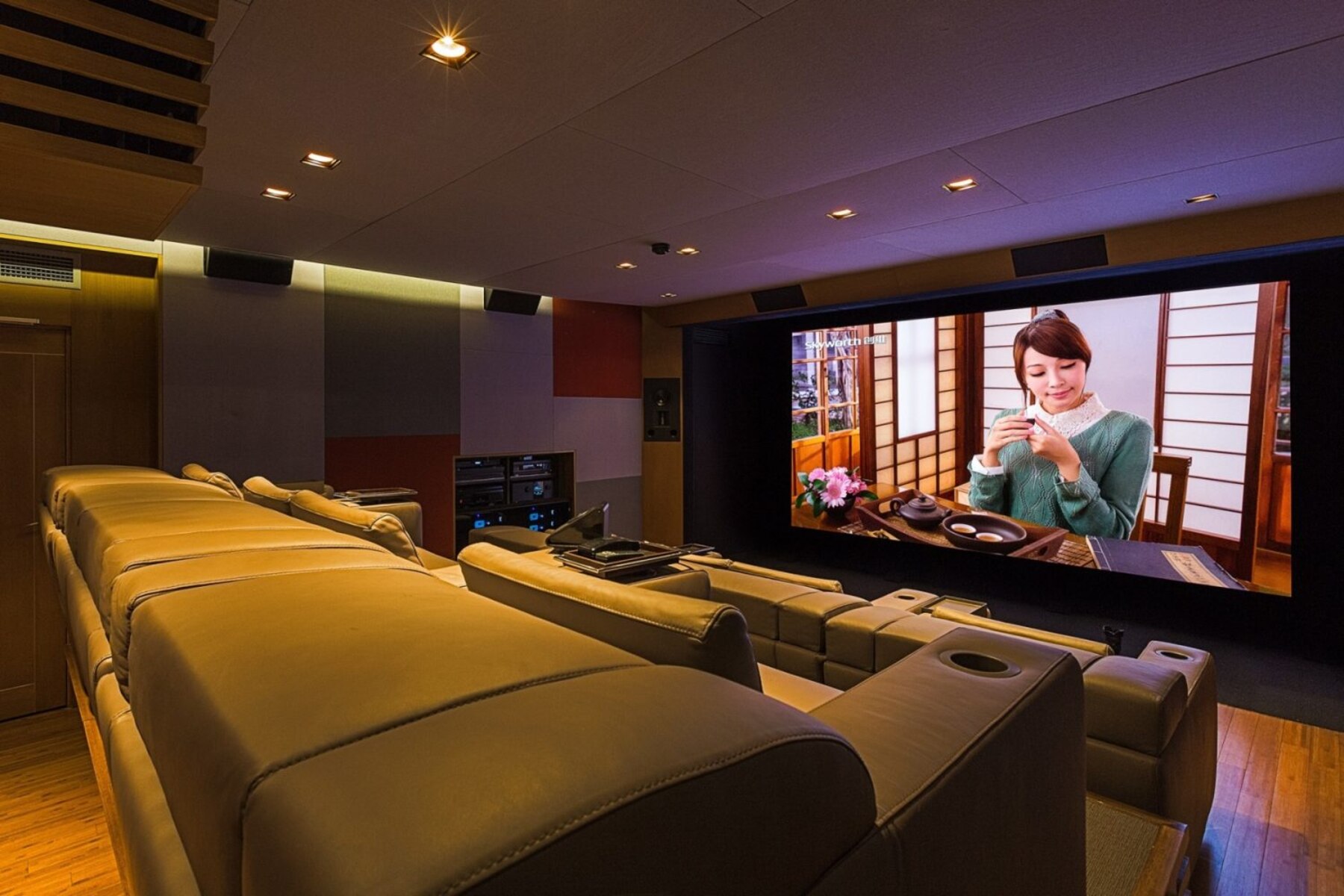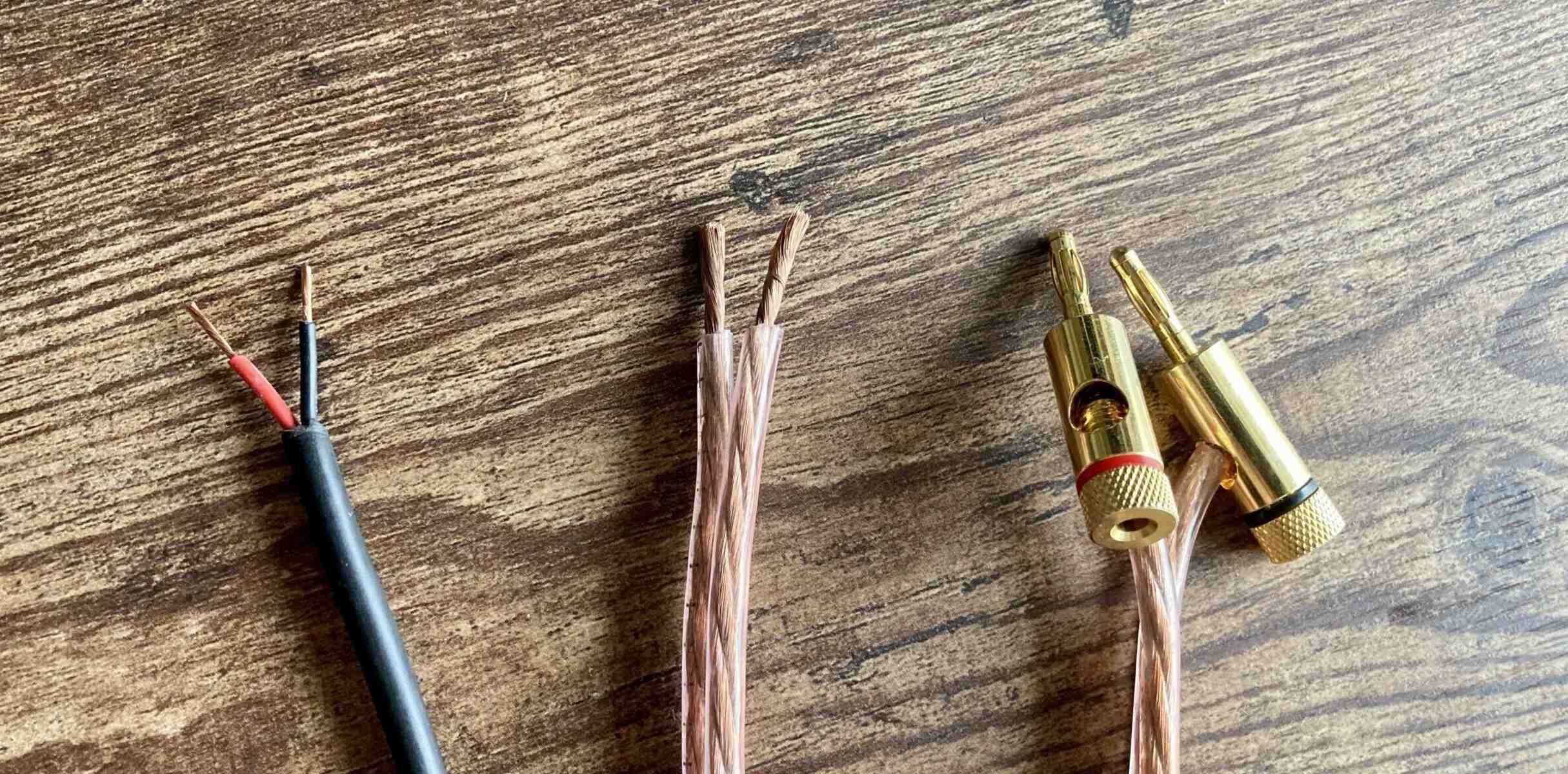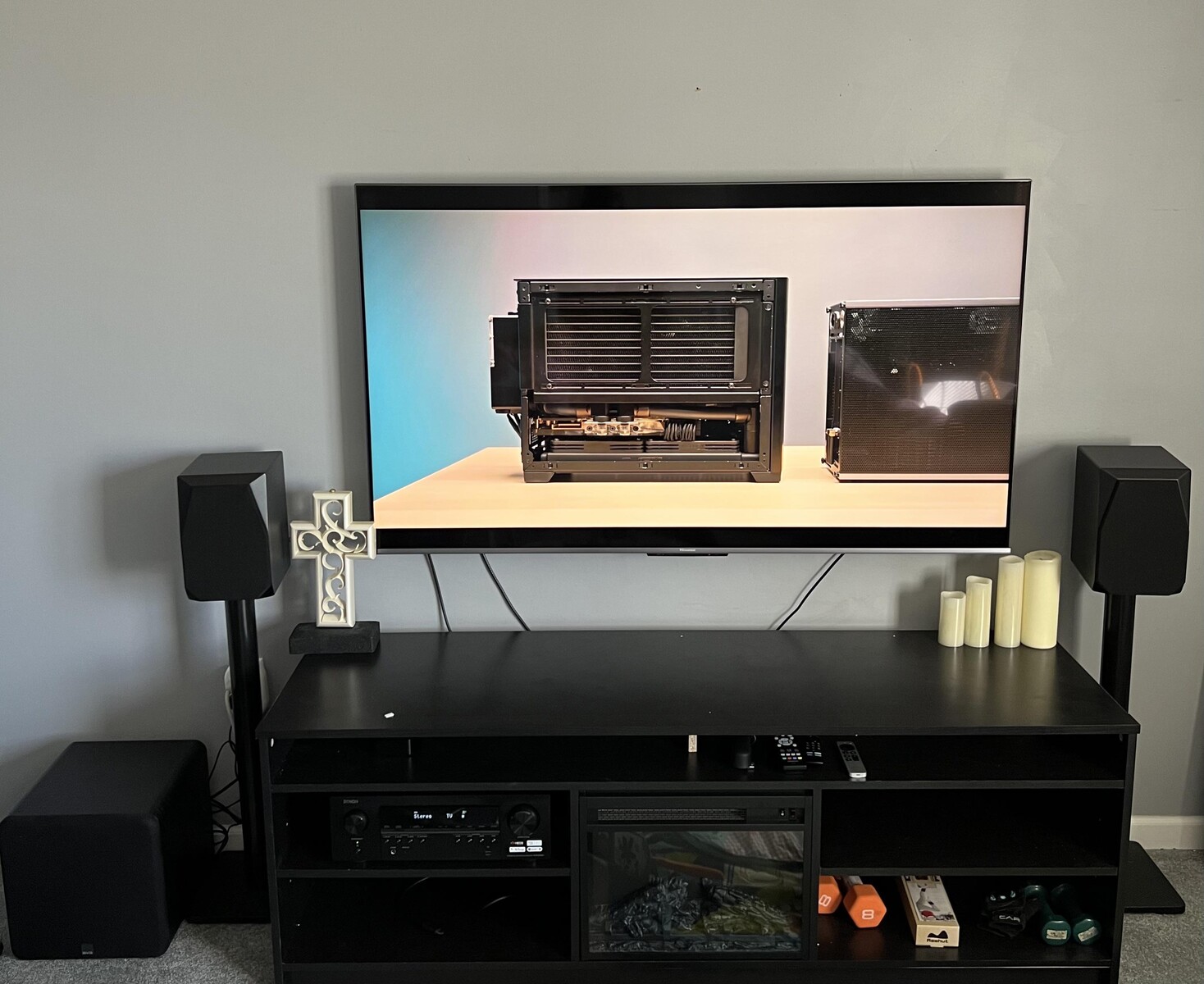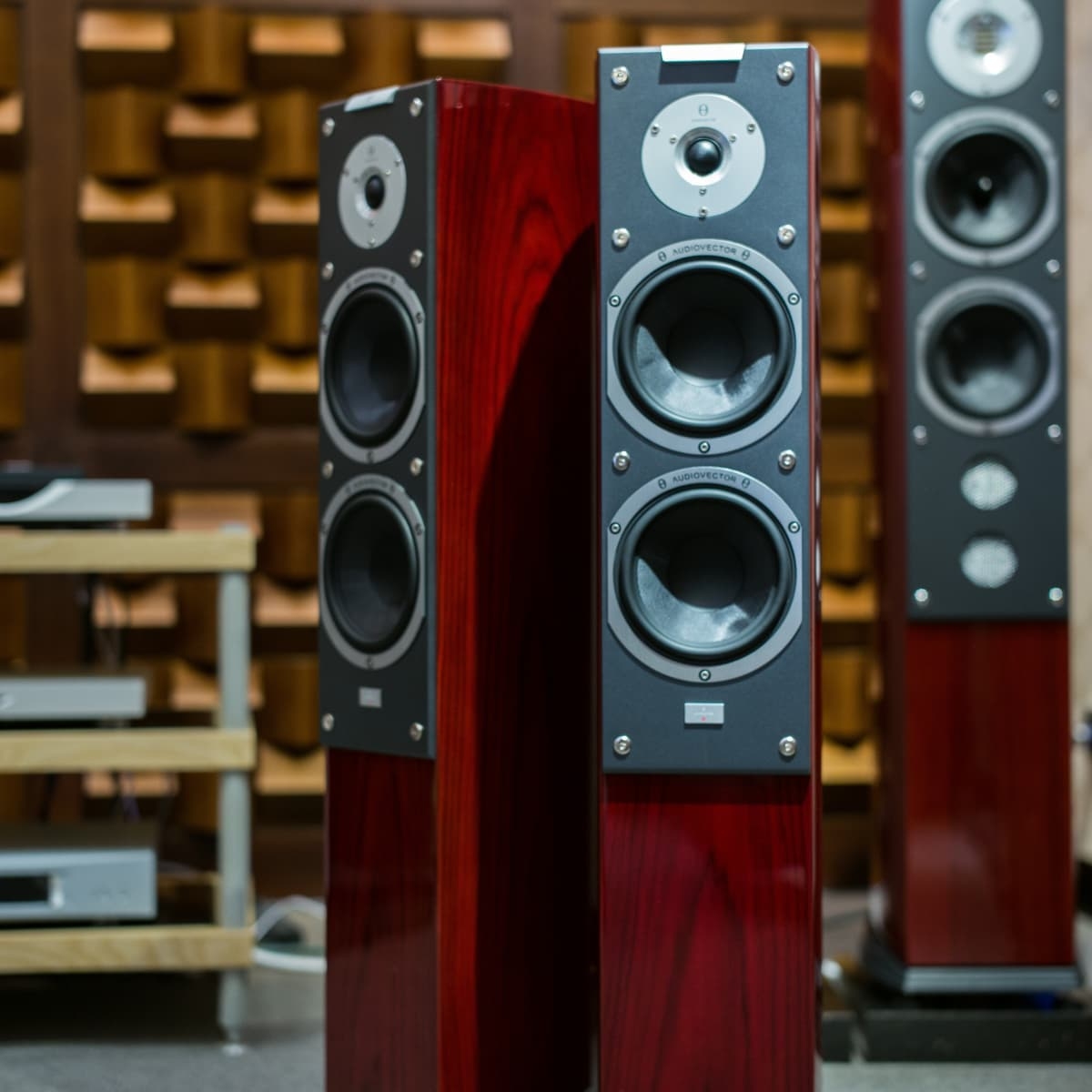Introduction
When it comes to setting up a surround sound system, there are various factors to consider in order to achieve the best audio experience. While speakers and amplifiers play a crucial role, one key element that often gets overlooked is the gauge of wire used in the system. The right gauge wire can make a significant difference in the overall sound quality and performance of your surround sound setup.
In this article, we will dive into the world of wire gauge and its importance in surround sound systems. We will explore the benefits of using the correct gauge wire and highlight the factors to consider when selecting the appropriate wire gauge for your specific system.
Understanding wire gauge is essential as it directly affects the transmission of electrical signals between your audio components. The gauge refers to the thickness or diameter of the wire, with lower gauge numbers indicating thicker wire. Thicker wires offer less resistance to the flow of electricity, ensuring a more efficient and higher-quality audio signal.
Choosing the right gauge wire for your surround sound system is crucial because using the wrong gauge can result in poor sound quality, signal distortion, and even damage to your equipment. By selecting the appropriate wire gauge, you can optimize the performance of your speakers, amplifiers, and subwoofers, resulting in a more immersive and enjoyable listening experience.
In the following sections, we will delve deeper into the benefits of using the right gauge wire for surround sound systems, explore common wire gauge options, and provide tips for installation and wire management. Whether you are setting up a home theater system or a professional audio setup, this article will serve as a comprehensive guide to help you make informed decisions regarding your wire gauge selection.
Benefits of Using the Right Gauge Wire for Surround Sound Systems
Using the proper gauge wire for your surround sound system can have a significant impact on the overall audio quality and performance. Let’s explore the benefits of using the right gauge wire:
1. Improved Signal Transmission: The right gauge wire ensures efficient transmission of electrical signals without significant signal loss. Thicker wire with lower gauge numbers has a lower resistance, allowing for better conductivity and minimal loss of the audio signal. This translates to clearer and more accurate sound reproduction.
2. Enhanced Audio Fidelity: The use of the correct gauge wire minimizes distortion and interference, resulting in improved audio fidelity. When the wire gauge is matched correctly with the power requirements of your speakers and amplifiers, you can experience the full dynamic range and nuances of the audio being played.
3. Prevents Overheating and Damage: Using an insufficient gauge wire can lead to overheating, especially in high-power systems. This can cause damage to your equipment and compromise the overall performance. The right gauge wire can handle the current flow without overheating, ensuring the longevity and reliability of your surround sound setup.
4. Consistent and Balanced Sound: Using the right gauge wire ensures a consistent flow of power to your speakers and subwoofers, resulting in balanced sound across all channels. This consistency ensures that the volume, clarity, and tonal quality remain consistent throughout your listening experience.
5. Maximum Speaker Efficiency: Thicker gauge wire provides an optimal electrical pathway, allowing your speakers to operate at their maximum efficiency. This means that your speakers can reproduce sound with greater accuracy, dynamics, and detail, resulting in a more immersive and enjoyable audio experience.
6. Future-Proofing Your System: Investing in the right gauge wire now can future-proof your surround sound system. If you plan to upgrade your speakers or amplifiers in the future, having the correct gauge wire already in place will ensure compatibility and optimal performance.
By using the appropriate gauge wire for your surround sound system, you can maximize the potential of your audio setup, creating a truly immersive and high-quality audio experience. The next section will explore the factors to consider when choosing the gauge wire for your specific system.
Factors to Consider When Choosing the Gauge Wire for Surround Sound Systems
Choosing the right gauge wire for your surround sound system requires careful consideration of several factors. Here are some key factors to keep in mind:
1. Power Requirements: Assess the power requirements of your speakers and amplifiers. Higher power ratings typically require thicker gauge wire to handle the increased current flow. Consult the documentation or specifications provided by your equipment manufacturers to determine the appropriate wire gauge for your specific power requirements.
2. Distance: Consider the distance between your audio components. Longer cable runs experience greater resistance, which can result in signal degradation if the wire gauge is not appropriate. Ensure that you choose a wire gauge that can efficiently transmit the audio signal over the desired distance without significant loss.
3. Wiring Configuration: Determine the wiring configuration of your surround sound system. If you are running multiple sets of speakers or using bi-wiring or bi-amping configurations, you may need to account for the additional current demands. Thicker gauge wire may be necessary to handle the increased load.
4. Budget: Take your budget into consideration. Thicker gauge wire tends to be more expensive due to the higher copper content. While it is important to choose the appropriate wire gauge, it is also essential to find a balance between quality and cost-effectiveness. Select the best wire gauge that fits within your budget constraints.
5. Compatibility: Ensure that the chosen wire gauge is compatible with the connectors and terminals in your surround sound system. Some connectors may have limitations on the wire gauge they can accommodate. Check the specifications of your connectors and choose a wire gauge that matches the compatibility requirements.
6. Future Considerations: Consider future upgrades or expansions to your surround sound system. If you plan to add more speakers, upgrade to more powerful amplifiers, or increase the distance between components, it might be wise to choose a slightly thicker gauge wire to accommodate potential future needs.
By carefully considering these factors, you can make an informed decision when selecting the appropriate gauge wire for your surround sound system. The next section will provide a deeper understanding of wire gauge and its importance in audio systems.
Understanding Wire Gauge and Its Importance in Audio Systems
Wire gauge refers to the thickness or diameter of an electrical wire. It is denoted by a numerical value, with lower gauge numbers representing thicker wire. Understanding wire gauge is essential as it directly affects the performance and reliability of audio systems. Let’s explore the importance of wire gauge in audio systems:
1. Transmission of Electrical Signals: The wire serves as a pathway for electrical signals to travel between audio components, such as speakers, amplifiers, and receivers. Thicker wire with a lower gauge number offers less resistance, allowing for an efficient flow of electrical signals. This results in improved conductivity and signal integrity, ensuring that the audio signal remains intact and faithful to the original recording.
2. Resistance and Power Handling: Thicker gauge wire has lower resistance, which is crucial for audio systems that deliver high-powered signals. When the wire is too thin for the power requirements of the system, resistance increases, leading to voltage drops and signal degradation. The right gauge wire can handle the power demands, minimizing resistance and reducing the risk of signal loss and distortion.
3. Voltage Drop Prevention: In long cable runs, resistance can cause a voltage drop, especially with thinner gauge wire. This can result in a noticeable reduction in audio quality and volume. Using an appropriate gauge wire for the distance between components ensures that voltage drop is minimized, maintaining consistent audio performance across the system.
4. Heat Dissipation: Audio systems can generate heat, especially in high-powered setups. Thicker gauge wire has a larger cross-sectional area, allowing for better heat dissipation. This helps to prevent overheating and potential damage to your equipment, ensuring the longevity of your audio system.
5. Speaker Protection: Thicker wire gauge can provide sufficient current flow to power speakers. Inadequate wire gauge can cause the amplifier to deliver an excessive current, potentially damaging the speakers. Properly matched wire gauge ensures that speakers operate within their intended power handling capabilities, protecting them from damage.
6. Audio Fidelity: The use of the correct gauge wire contributes to maintaining audio fidelity. It minimizes signal loss, distortion, and interference, allowing for accurate reproduction of the original sound. This enhances the overall listening experience, providing clearer dialogue, detailed sound effects, and immersive music playback.
Understanding wire gauge and its importance in audio systems empowers you to make informed decisions when selecting the appropriate wire for your surround sound setup. In the next section, we will explore common wire gauge options available for surround sound systems.
Common Wire Gauge Options for Surround Sound Systems
When it comes to selecting the appropriate wire gauge for your surround sound system, there are several common options to consider. While the specific gauge you choose depends on various factors, including power requirements and distance, the following wire gauges are commonly used in surround sound setups:
1. 16 AWG (American Wire Gauge): 16 AWG wire is a popular choice for many surround sound systems. It offers a good balance between cost and performance. This gauge is suitable for shorter cable runs and systems with moderate power requirements.
2. 14 AWG: 14 AWG wire is slightly thicker than 16 AWG and is commonly used for longer cable runs. It provides lower resistance and is capable of handling higher power levels. If you have a large room or need to run cables over a significant distance, 14 AWG wire is a suitable choice.
3. 12 AWG: 12 AWG wire is a thicker option commonly used for high-power audio systems. It offers even lower resistance and is ideal for long cable runs or setups with speakers that demand higher current. 12 AWG wire ensures optimal power delivery and is often employed in professional audio installations.
4. 10 AWG: 10 AWG wire is the thickest option on this list and is typically reserved for extremely high-power audio systems. It provides excellent conductivity and is capable of handling substantial current flows. This gauge is used in specialized applications where significant power delivery is required, such as large theaters or arenas.
It’s important to note that these wire gauge options are not exhaustive, and other gauges exist depending on specific requirements and preferences. Additionally, some manufacturers may recommend specific wire gauges for their equipment, so it’s always advisable to consult the documentation provided with your components.
When deciding on the wire gauge for your surround sound system, consider the power demands of your equipment, the distance between components, and your budget. Choosing a gauge that strikes the right balance ensures optimal audio performance and reliability.
In the next sections, we will discuss when to use thicker or thinner gauge wire and how to calculate the required gauge wire for your specific surround sound system.
When to Use Thicker Gauge Wire for Surround Sound Systems
Thicker gauge wire is typically required in specific scenarios where higher power demands or longer cable runs are involved. Here are some situations when it is recommended to use thicker gauge wire for your surround sound system:
1. High-Power Systems: If you have a surround sound system with high-powered speakers or amplifiers, using thicker gauge wire is essential. Thicker wires can handle the increased current flow, reducing the risk of voltage drops, signal loss, and distortion. This is particularly important when dealing with systems that require substantial power to drive large or multiple speakers.
2. Long Cable Runs: When running cables over longer distances, resistance can become a significant factor, leading to signal degradation. Using a thicker gauge wire minimizes resistance and voltage drops, ensuring a consistent audio signal throughout the entire length of the cable run. This is particularly important when connecting speakers or amplifiers that are located far apart.
3. Bi-Wiring or Bi-Amping: In configurations where speakers are bi-wired or bi-amped (using separate connections for different frequency ranges or amplifiers), thicker gauge wire may be necessary. With multiple connections being made to each speaker, more current flow is needed, and thicker wire can effectively handle the increased load, ensuring optimal performance.
4. Sound Quality Considerations: If you are an audiophile who values the finest audio quality and wants to minimize any potential signal loss, using thicker gauge wire can contribute to improved sound reproduction. The reduced resistance and increased conductivity of thicker wire can help maintain the integrity of the audio signal, resulting in enhanced clarity, dynamics, and overall fidelity.
5. Future-Proofing: If you anticipate future upgrades or expansions to your surround sound system, choosing a thicker gauge wire can be a wise decision. Thicker wire offers greater headroom for power demands and potential system expansions, ensuring that your wire infrastructure can handle any future enhancements without the need for rewiring.
While thicker gauge wire offers numerous benefits, it is important to strike a balance between wire thickness, power requirements, and budget. Using excessively thick wire where it is not necessary can lead to unnecessary expenses. Therefore, it is crucial to assess your specific system requirements and choose the appropriate wire gauge accordingly.
In the next section, we will discuss when it is appropriate to use thinner gauge wire for surround sound systems.
When to Use Thinner Gauge Wire for Surround Sound Systems
While thicker gauge wire is generally recommended for surround sound systems, there are instances where using thinner gauge wire can be appropriate. Here are some scenarios when it is suitable to use thinner gauge wire:
1. Low-Power Systems: If your surround sound system has lower power requirements, such as for small desktop setups or low-volume listening spaces, thinner gauge wire can be sufficient. Thinner wire can adequately handle the lower current flow, reducing the need for more expensive and thicker gauge wire.
2. Short Cable Runs: When the distance between your audio components is minimal, there is less risk of significant voltage drops or signal degradation. Therefore, using thinner gauge wire for short cable runs can still provide adequate conductivity without compromising audio quality.
3. Budget Constraints: Thinner gauge wire is generally less expensive compared to thicker gauge wire due to the lower amount of copper used. If you are on a tight budget and your system’s power requirements and cable lengths are within the limits of thinner gauge wire, it can be a cost-effective option without compromising audio performance.
4. Compatibility with Connectors: Some connectors and terminals might have limitations on the wire gauge they can accommodate. In such cases, thinner gauge wire might be the only option to ensure proper connectivity and fit. Make sure to check the compatibility of your connectors and choose a wire gauge that aligns with their requirements.
5. Wireless Speaker Systems: In wireless surround sound systems, the need for physical wires is eliminated. However, some wireless systems might still require minimal wiring connections for power or signal transmission. In such instances, thinner gauge wire can suffice as the primary concern shifts from power transmission to signal integrity.
It is crucial to note that the decision to use thinner gauge wire should be based on the specific requirements and limitations of your surround sound system. Carefully assess the power demands, cable lengths, and connector compatibility before opting for thinner gauge wire.
Although thinner gauge wire can be suitable for certain situations, it is essential to strike a balance between wire thickness and system requirements. Ensuring that the wire can handle the necessary current flow without excessive resistance is vital to maintaining audio performance and preventing signal loss.
In the next section, we will discuss how to calculate the required gauge wire for your surround sound system to ensure optimal performance.
How to Calculate the Required Gauge Wire for Your Surround Sound System
Calculating the required gauge wire for your surround sound system involves considering the power requirements and distance between components. Follow these steps to determine the appropriate wire gauge:
1. Determine Power Requirements: Identify the power requirements of your speakers and amplifiers. This information can usually be found in the product documentation or specifications provided by the manufacturer. Note the impedance (measured in ohms) and power rating (measured in watts) for each component.
2. Consider Cable Length: Measure the total cable length for each speaker or audio connection in your system. Make sure to account for any extra length needed for cable routing and connections.
3. Use a Wire Gauge Chart or Calculator: Consult a wire gauge chart or online wire gauge calculator. These resources provide guidance on the appropriate wire gauge based on power requirements and cable length. Enter the power ratings and distance information for each speaker or connection to determine the recommended wire gauge.
4. Consider Safety and Future Upgrades: While the calculated wire gauge may indicate a specific value, it’s often advisable to choose the next higher gauge for safety and potential future upgrades. This ensures that the wire can handle the current flow comfortably and provides headroom for any system enhancements.
5. Check Connectors and Terminals: Before finalizing your wire gauge selection, ensure that the chosen wire fits securely into the connectors and terminals of your audio components. Some connectors may have limitations on the wire gauge they can accommodate, so double-check the compatibility to avoid any connectivity issues.
By following these steps, you can calculate the required gauge wire for your surround sound system accurately. Investing the effort and time to determine the right wire gauge ensures optimal audio performance, minimizing signal loss, and maximizing the potential of your audio components.
Keep in mind that wire gauge calculations serve as a general guideline, and individual system requirements may vary. Consulting with audio professionals or seeking advice from knowledgeable individuals in audio engineering can provide further insights and assistance in choosing the appropriate wire gauge for your specific setup.
In the next section, we will provide some practical tips for installing and managing wire in surround sound systems.
Tips for Installing and Managing Wire for Surround Sound Systems
Installing and managing wire for surround sound systems requires careful attention to detail to ensure optimal performance and organization. Here are some useful tips to help you with wire installation and management:
1. Plan Your Cable Routes: Before you start installing wires, plan the routes carefully. Take into account the locations of speakers, amplifiers, and audio sources. Minimize the length of cable runs and avoid crossing power cables to reduce the chances of interference.
2. Use Proper Cable Management: Use cable management solutions such as cable ties, clips, or conduit to keep your wires organized and neatly bundled. This helps avoid tangles, reduces the risk of damage, and makes troubleshooting or future modifications easier.
3. Label Your Cables: Label your cables as you install them. Use tags, labels, or colored tape to identify each cable’s purpose or destination. This simplifies troubleshooting and makes it easier to identify specific connections in the future.
4. Leave Extra Length: Allow for extra length when cutting cables for connections. Having a bit of extra cable provides flexibility in case you need to move or rearrange your audio components in the future. However, avoid having excessive slack as it can lead to cable clutter.
5. Maintain Proper Separation: Keep audio cables separated from power cables to prevent electromagnetic interference (EMI) and unwanted hum or noise. Run them along different paths and maintain a distance between them wherever possible.
6. Secure Connections: Ensure that all wire connections are secure and properly seated. Loose connections can result in signal degradation and intermittent audio issues. Double-check all connections to ensure a snug fit and good electrical contact.
7. Test and Verify Connections: After installation, test and verify all audio connections to ensure they are working correctly. Check for any audio signal loss, distortion, or noise. Make any necessary adjustments or repairs to eliminate any issues.
8. Regular Maintenance: Perform regular inspections of your wire connections to ensure they remain secure and in good condition. Dust or debris accumulation can affect performance, so clean the connections if necessary. Additionally, check for any signs of wear or damage and replace cables that show signs of deterioration.
9. Seek Professional Assistance (If Needed): If you are unsure about any aspect of wire installation or encounter difficulties, consider seeking professional assistance. Audio technicians or electricians with expertise in audio systems can provide valuable guidance and ensure the optimal setup of your surround sound system.
By following these tips, you can ensure that your wire installation is clean, organized, and optimized for the best audio performance. Proper wire management reduces the risk of signal loss, interference, and technical issues, allowing you to fully enjoy your surround sound system.
Now that you have a better understanding of wire installation and management, let’s conclude this article with a summary.
Conclusion
Choosing the right gauge wire is crucial for achieving optimal audio performance in your surround sound system. By understanding wire gauge and its importance, you can make informed decisions that enhance sound quality and minimize signal loss. Thicker gauge wire is suitable for high-power systems, longer cable runs, and setups requiring maximum performance and durability. On the other hand, thinner gauge wire can be appropriate for low-power systems, short cable runs, and budget-friendly setups.
Calculating the required wire gauge based on power requirements and distance provides a guideline for selecting the appropriate wire thickness. Proper wire installation and management, such as planning cable routes, using cable management solutions, and ensuring secure connections, help maintain organization and minimize interference.
Remember to label your cables, leave extra length for future modifications, and regularly inspect and maintain your wire connections. Seeking professional assistance when needed can ensure a successful setup and troubleshoot any technical issues that may arise.
By following the guidelines and tips provided in this article, you can optimize your surround sound system’s performance and enjoy immersive audio experiences, whether it’s for home theater setups or professional audio installations.
So go ahead, choose the right gauge wire, install it with care, and unleash the true potential of your surround sound system for a truly captivating audio journey.









